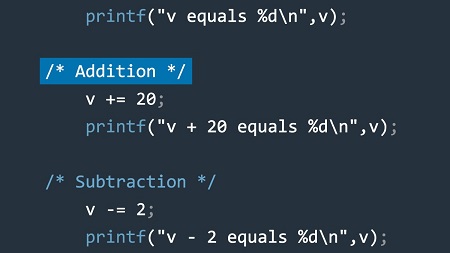English | MP4 | AVC 1280×720 | AAC 48KHz 2ch | 1h 23m | 281 MB
Once you’ve mastered the basics of programming in C, you can concentrate on writing more efficient, more functional code. In this course, Dan Gookin offers some tips to help you extend your C programming skills. Learn how to read and write main function arguments, build more useful variables, and work with arrays and structures. Plus, get tips on generating pointers, and take the practice challenges to test your learning along the way.
Table of Contents
Welcome
1 Welcome
Introduction
2 What you should know before watching this course
3 Using the exercise files
C Programming Weird-Symbol Roundup
4 Using assignment operators
5 Challenge Use an assignment operator
6 Solution Use an assignment operator
7 Understanding the ternary operator
8 Challenge A ternary-operator decision
9 Solution A ternary-operator decision
Main Function Arguments
10 Working with arguments in the main() function
11 Challenge Reading command-line arguments
12 Solution Reading the command line
Beyond Basic Variables
13 Setting up an external variable
14 Typecasting variables
15 Challenge Specifying a cast
16 Solution Specifying a cast
17 Taking advantage of static variables
18 Challenge Setting up a static variable
19 Solution Setting up a static variable
Arrays and Structures
20 Sorting an array
21 Challenge Sorting a string
22 Solution Sorting a string
23 Working with arrays and functions
24 Challenge An array-modification function
25 Solution An array-modification function
26 Sending a structure to a function
27 Challenge Creating a structure function
28 Solution Creating a structure function
29 Building an array of structures
30 Challenge Sorting an array of structures
31 Solution Sorting an array of structures
Pointer Tips
32 When to use the ampersand operator
33 How to bind the asterisk operator
34 Challenge Incrementing a pointer
35 Solution Incrementing a pointer
36 Understanding arrays and pointers
37 Challenge Displaying an array
38 Solution Displaying an array
39 Obeying the order of precedence
Conclusion
40 Next steps
Resolve the captcha to access the links!
